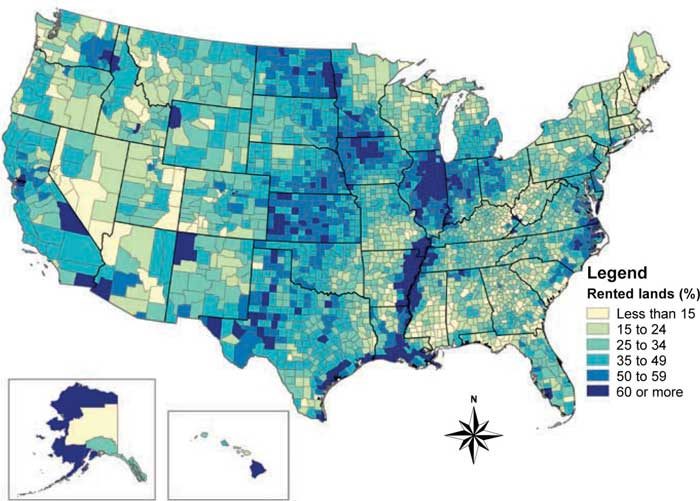No-Till Farmer
Get full access NOW to the most comprehensive, powerful and easy-to-use online resource for no-tillage practices. Just one good idea will pay for your subscription hundreds of times over.

RENTAL DENSITY. This map shows the percentage of rented farmland per county according to the 2017 USDA NASS Agricultural Census. Heavy concentrations of rental properties are visible in the Corn Belt states.
While research shows conservation practices such as no-till and cover crops increase the value of farmland by improving the productivity of the soil, adopting these measures often has an immediate upfront cost and a less-than-immediate return on investment. This delayed economic reward, coupled with large numbers of absentee landowners eager for a rental check from short-term land leases, may be playing a large role in slowing the adoption of soil stewardship practices.
Nationally, about 40% of the total 911 million acres of farmland and pasturage in the Lower 48 states is rented by producers from landowners, many of whom are not producers and are not familiar with agricultural practices. In many areas involved in cash crop production, about 250 million acres nationwide, it’s not uncommon for 50% of farmland to be rented acres, and in the heart of the U.S. Corn Belt, some areas are nearing 80% rented fields.
A 2019 collaborative study by Auburn University and Iowa State University economic researchers showed statistical evidence the adoption of conservation practices is lower on rented land for cover crops, buffer strips and ponds/ sediment basins — but not for no-till. The study also highlighted economic reasons for policy changes in the tax code — tax credits or deductions — to entice non-operator landowners (NOL) to look more favorably to creating agreements involving soil stewardship.
A recent survey by the American Farmland Trust (AFT) shed interesting light on NOLs and their attitudes toward environmental issues on farm land.
In…